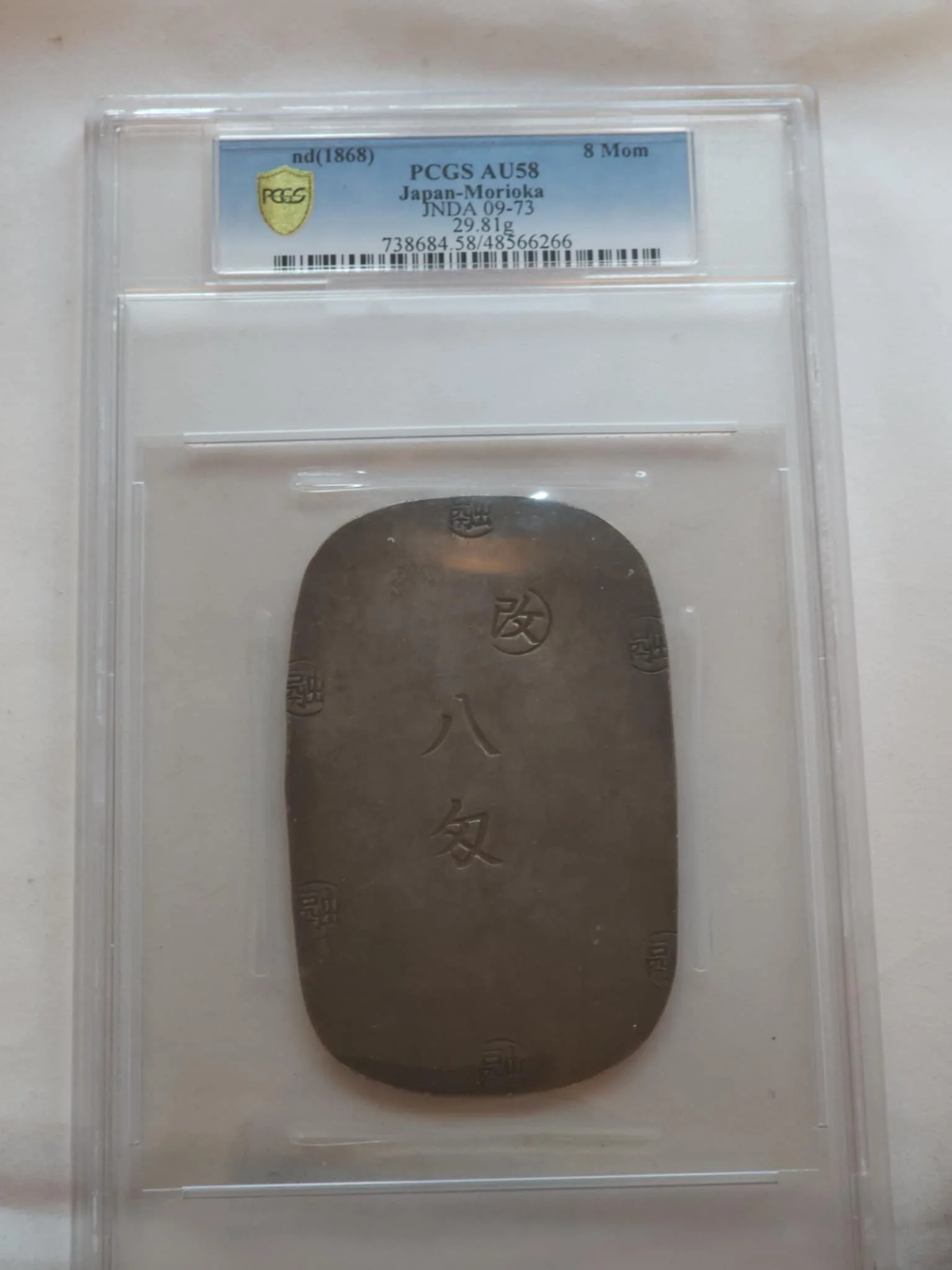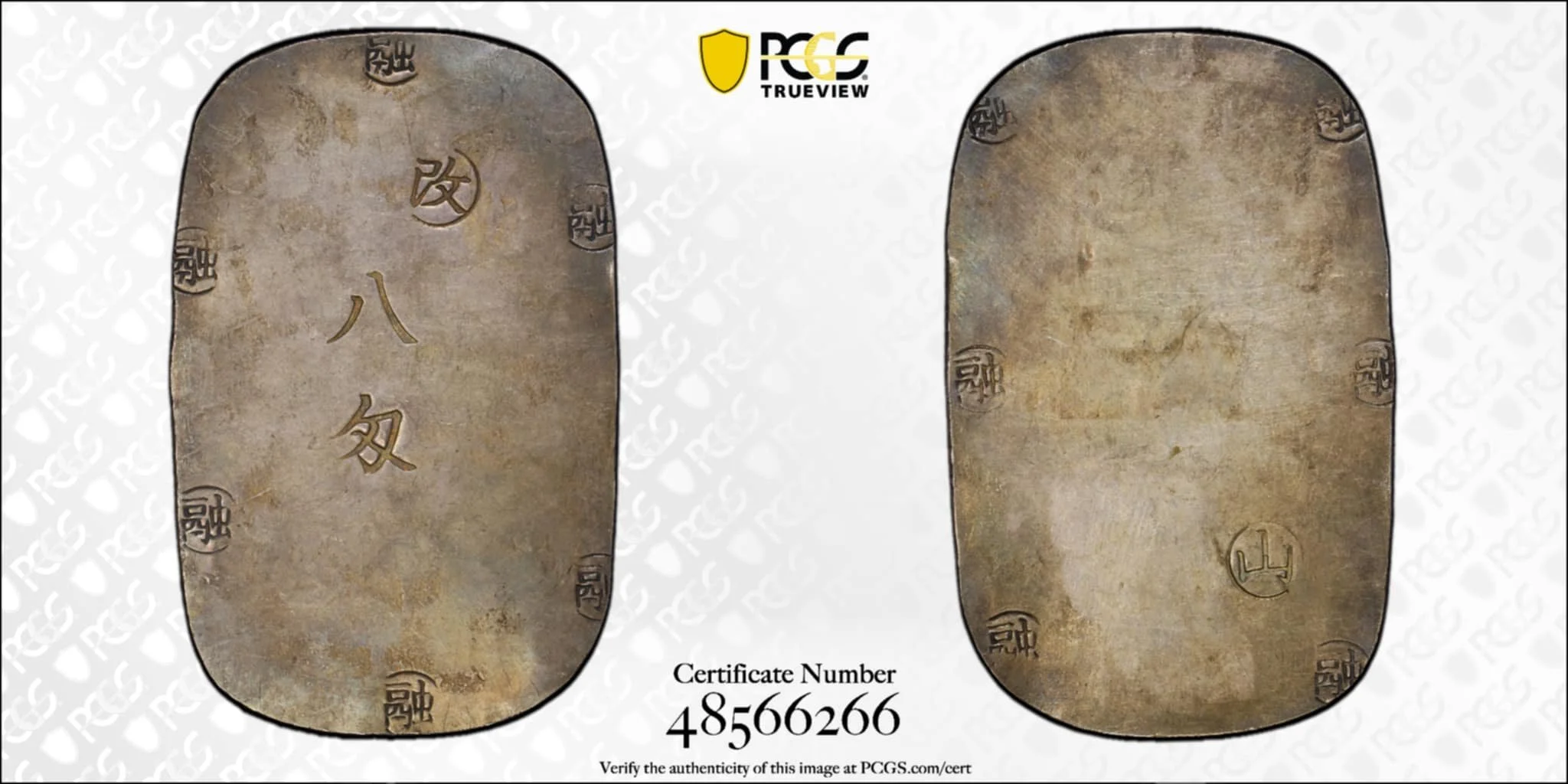 Image 1 of 2
Image 1 of 2

 Image 2 of 2
Image 2 of 2



Japanese Silver Coin from Akita (4 Monme 6 Bu) (about 160 years ago)
This is a silver coin from the Akita domain in northern Japan, produced during the final decade of the Tokugawa Shogunate as regional domains still maintained monetary autonomy.
Coin Description:
Front side: Likely features regional markings specific to Akita domain
Back side: Probably shows denomination indicators
Technical Details:
Silver composition
4 Monme 6 Bu denomination (local Akita weight standard)
JDNA reference number 09-72
Certified by PCGS with exceptional MS 62 grade (Mint State)
Minted in 1863
Historical Significance: This coin was issued just before the massive social and political changes of the Meiji Restoration that would transform Japan from a feudal society into a modern nation-state. The Akita domain, located in northern Honshu (in modern Akita Prefecture), was one of many semi-autonomous regions under the weakening Tokugawa Shogunate. This currency represents the decentralized monetary system that existed in Japan before national unification, when regional lords (daimyo) still maintained the right to produce their own money alongside the shogunate's official currency.
This is a silver coin from the Akita domain in northern Japan, produced during the final decade of the Tokugawa Shogunate as regional domains still maintained monetary autonomy.
Coin Description:
Front side: Likely features regional markings specific to Akita domain
Back side: Probably shows denomination indicators
Technical Details:
Silver composition
4 Monme 6 Bu denomination (local Akita weight standard)
JDNA reference number 09-72
Certified by PCGS with exceptional MS 62 grade (Mint State)
Minted in 1863
Historical Significance: This coin was issued just before the massive social and political changes of the Meiji Restoration that would transform Japan from a feudal society into a modern nation-state. The Akita domain, located in northern Honshu (in modern Akita Prefecture), was one of many semi-autonomous regions under the weakening Tokugawa Shogunate. This currency represents the decentralized monetary system that existed in Japan before national unification, when regional lords (daimyo) still maintained the right to produce their own money alongside the shogunate's official currency.



















